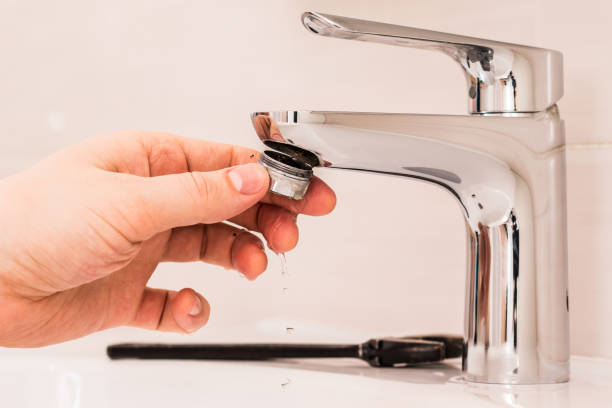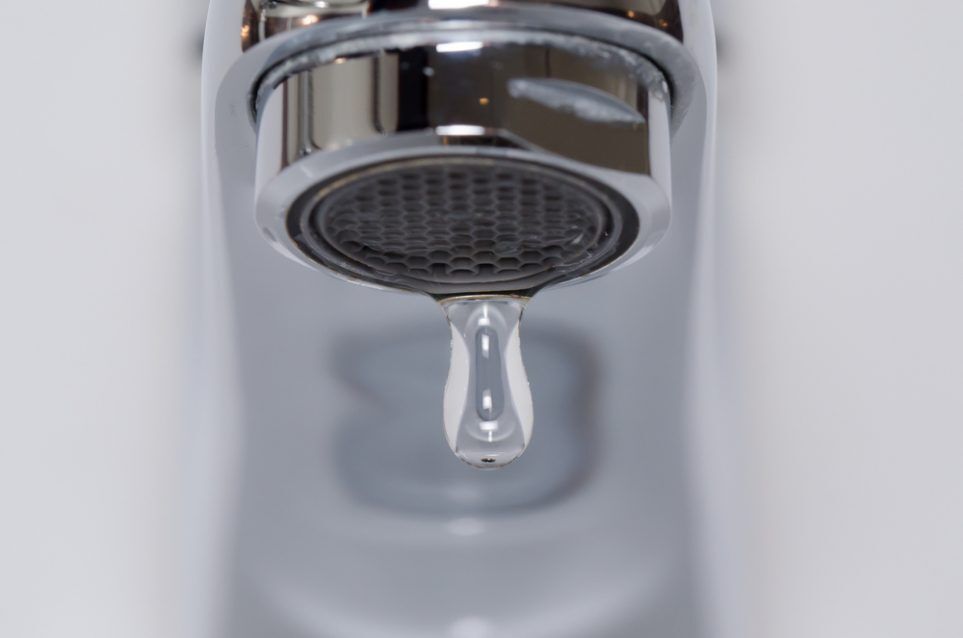In this article on the next paragraphs you can locate a good deal of high-quality additional info about Why Are My Faucets Dripping (And Can I Fix It Myself)?.

Dripping faucets might feel like a minor hassle, however their influence goes beyond just the inconvenience of the noise. From wasting water to incurring unnecessary financial costs and health risks, ignoring a trickling tap can cause numerous effects. In this write-up, we'll explore why it's vital to address this typical household problem immediately and effectively.
Wastefulness of Water
Ecological Impact
Leaking taps add significantly to water wastefulness. According to the Environmental Protection Agency (EPA), a single tap leaking at one drip per secondly can lose more than 3,000 gallons of water annually. This not only stress water resources however additionally influences environments and wildlife based on them.
Financial Prices
Enhanced Water Expenses
Past the environmental effect, trickling faucets can pump up water costs significantly. The gathered wastage in time equates right into greater utility expenses, which could have been prevented with prompt repairs.
Potential Residential Property Damages
In addition, prolonged trickling can lead to harm to components and surface areas bordering the tap. Water buildup can create discoloration, rust, and even structural issues if left neglected, causing extra repair service costs.
Health Problems
Mold and Mold Growth
The consistent visibility of wetness from a trickling faucet creates an ideal atmosphere for mold and mold growth. These fungis not just compromise interior air high quality yet likewise posture health and wellness threats, especially for people with respiratory conditions or allergic reactions.
Waterborne Conditions
Stagnant water in dripping faucets can come to be a breeding ground for bacteria and various other virus, raising the threat of waterborne diseases. Contaminants such as Legionella germs flourish in stagnant water, possibly bring about major ailments when consumed or inhaled.
DIY vs. Specialist Repair work
Advantages and disadvantages of Do It Yourself Repair Work
While some might attempt to repair a trickling tap themselves, DIY repair work include their very own collection of obstacles. Without proper knowledge and devices, DIY attempts can worsen the problem or cause insufficient repair work, prolonging the problem.
Advantages of Employing an Expert Plumber
Hiring a specialist plumber makes certain that the underlying source of the leaking tap is attended to successfully. Plumbing technicians possess the competence and devices to diagnose and repair tap problems efficiently, conserving time and reducing the threat of more damage.
Step-by-Step Overview to Repairing a Dripping Tap
Tools Needed
Before trying to fix a leaking tap, gather the needed tools, consisting of a flexible wrench, screwdrivers, replacement components (such as washing machines or cartridges), and plumber's tape.
Usual Tap Issues and Their Solutions
Recognize the kind of faucet and the specific problem triggering the drip. Common troubles include damaged washers, rusty valve seats, or defective O-rings. Describe supplier directions or online tutorials for detailed guidance on fixings.
Preventive Measures
Routine Upkeep Tips
To stop dripping faucets, do routine maintenance such as cleaning up aerators, evaluating for leaks, and replacing worn-out parts quickly. Furthermore, think about setting up water-saving gadgets or upgrading to much more efficient fixtures.
Importance of Prompt Repairs
Dealing with dripping taps as quickly as they're observed stops further water wastage and possible damages, ultimately conserving both water and money in the future.
Effect On Building Value
Perception of Well-Maintained Building
Preserving a home in good condition, consisting of dealing with upkeep problems like dripping taps, boosts its viewed worth and worth among possible purchasers or renters.
Influence on Resale Worth
Residences with well-maintained plumbing fixtures, consisting of faucets, command greater resale values in the real estate market. Attending to dripping taps can contribute to a positive impact during property assessments and negotiations.
Environmental Duty
Private Payment to Preservation
Taking responsibility for taking care of trickling faucets aligns with wider initiatives towards water preservation and environmental sustainability. Every individual's activities jointly make a significant impact on protecting valuable resources.
Sustainable Living Practices
By focusing on timely repair services and embracing water-saving routines, people add to sustainable living techniques that profit both existing and future generations.
Final thought
Dealing with a dripping tap surpasses simple ease; it's a crucial step towards preserving water, lowering economic prices, and protecting wellness and residential or commercial property. Whether with do it yourself fixings or professional assistance, acting to take care of leaking taps is a little yet impactful means to advertise liable stewardship of sources and add to a much healthier, extra lasting future.
How to Fix a Leaky Faucet: Step-by-Step Repair Guide
A leaky faucet may seem like a simple annoyance, but if it's not fixed promptly, that leak could cost hundreds to potentially thousands. From water damage to mold, mildew, and high water bills, even a tiny leak can be catastrophic if left unattended. Damage like this can even affect the overall value of your home, so it's important to take the right approach for leaky faucet repair. You may need the help of a plumber in some cases, but we've got a few tips you can try on how to fix a leaky faucet before calling the pros.
Four Faucet Types
When you're learning how to fix a leaky faucet, the first step is knowing what kind of faucet you're working with! There are four common types.
Cartridge Faucets
Cartridge faucets come in one- or two-handled varieties. In one-handled cartridge faucets, hot and cold water combines in a single cartridge. In the two-handled versions, hot and cold water are controlled separately and mixed in the faucet.
Ball Faucets
Ball faucets have a single lever you push up and down to adjust the pressure and rotate to change the temperature. A slotted metal ball controls the amount of water allowed into the spout.
Compression Washer Faucets
They're the oldest type of faucet, but they're still used in many homes — especially older ones. Compression faucets have two separate handles that, when turned, raise or lower the washer that seals a water valve. This valve stops water from flowing through the faucet when it is turned off.
Disc Faucets
Disc faucets rarely need to be repaired due to their maintenance-free design. The water flow is controlled by two discs — the upper one raises and lowers against a fixed lower disc, creating a watertight seal. If your disc faucet starts leaking, you may need to replace the seals or clean residue buildup from the inlets.
Fixing a Leaky Faucet
Step 1: Turn Off the Water
Whether you're learning how to fix a leaky bathtub faucet or how to fix a leaky kitchen faucet, always turn off the water supply to your working area when you're fixing a leak. The last thing you want is a flood added to your list of things to fix.
Look for the shutoff valves below your sink or around the tub and turn them clockwise to stop the water flow. If your faucet doesn't have shutoff valves, you may need to turn off the water for the whole house. Check to make sure it's off by turning the faucet on. If nothing comes out, you're ready to start the repair.
Step 2: Take Apart the Faucet
How you disassemble your faucet depends on the type of fixture you have. You can use a flathead screwdriver to remove the caps on top of the handle or handles for cartridge and compression faucets. Inside, you should see handle screws. Unscrew these with a screwdriver to remove the handle.
Disc- and ball-style faucets will typically have an inlet screw near the handle, and removing that will reveal the interior of the faucet.
Detach the Valve Stem
For cartridge- and compression-style faucets, you'll see the inner valve stem or cartridge once you remove the faucet handles. If you have a compression faucet, unscrew the brass valve stem. If you have a cartridge faucet, pull out the cartridge. If your cartridge has been in place for a while, it may require some tools or extra force to remove it due to mineral deposits.
Examine and Replace Parts
Once you've removed the parts, check them out to confirm what needs to be replaced. You may see corroded rubber washers, O-rings, stems, or cartridges. On a ball-style faucet, check the seats and springs for damage.
If you need to repair a leaky disc faucet, check the inlet and seals on the lower disc.
Once you determine what parts must be replaced, visit your local hardware store. Bring the damaged parts with you to ensure you can purchase the correct components to replace them.
Clean Valves and Faucet Cavity
If you've removed a stem or cartridge, you may notice mineral buildup in the faucet's threads. Use white vinegar to clean the valve seat by soaking it for a few minutes, then scrub it away with a soft toothbrush and rinse with warm water. You can also clean the interior of the faucet in the same way.
Reassemble the Faucet
Once your faucet is cleaned and the required parts have been replaced, it's time to reassemble it. Put the pieces back together and slowly turn the water supply back on. Doing this slowly is crucial because too much initial water pressure can damage the new hardware you've just installed.
https://homewarranty.firstam.com/blog/how-to-fix-leaky-faucet

Do you really like reading about 4 Common Reasons for a Leaky Faucet? Try leaving a review further down. We would be delighted to listen to your insights about this review. We hope that you visit us again later on. In case you liked our article please do not forget to share it. We thank you for reading our article about Should I Repair or Replace a Leaky Faucet?.